#alapayevsk
Explore tagged Tumblr posts
Text
On this day: July 18th 1918, The Bolsheviks took several Romanovs to a mine shaft in Alapaevsk and brutally murdered them. These victims were:
Grand Duchess Elisabeth Feodorovna, Grand Duke Sergei Mikhailovich, Prince Ioann Konstantinovich, Prince Konstantin Konstantinovich, Prince Igor Konstantinovich, and Vladimir Pavlovich Paley, along with nun, Varvara Yakovleva and Feodor Semyanovich Remez
Photos of the tragic dead bodies of the victims and other photos from the murder.
⚠️ !!!TRIGGER WARNINGS!!! ⚠️
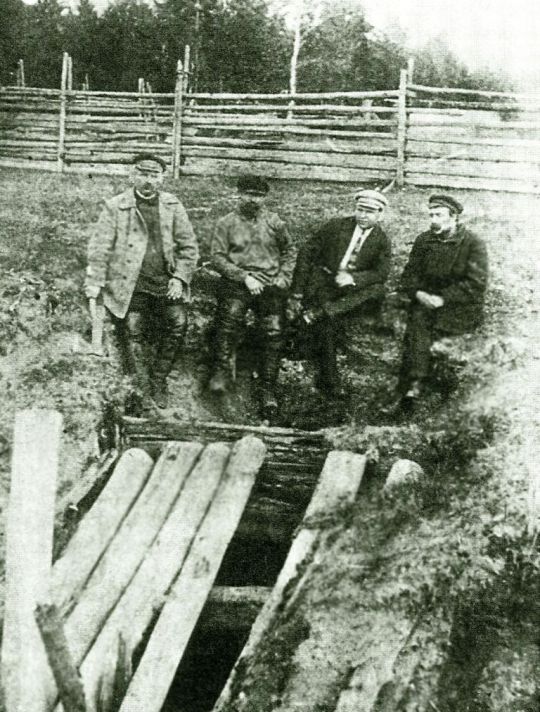
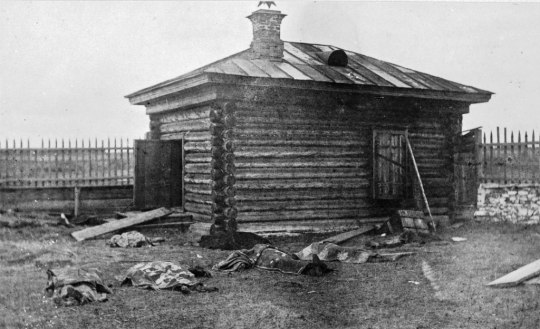
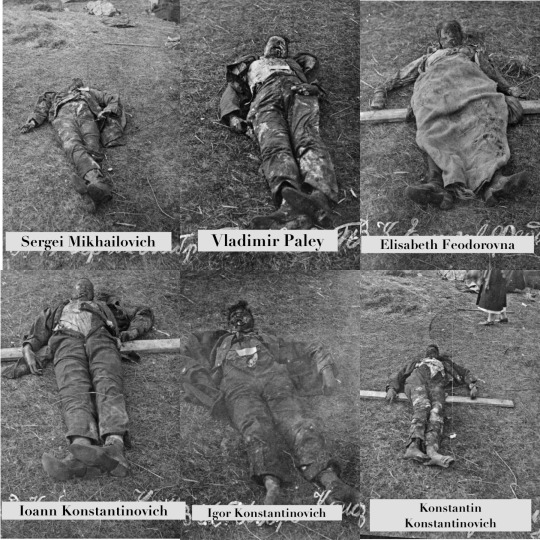
May their souls rest in peace ❤️🩹🕊️✨
#romanov#romanovs#alapaevsk#alapayevsk#elisabeth feodorovna#princess elisabeth of hesse#sergei mikhailovich#ioann konstantinovich#igor konstantinovich#konstantin konstantinovich#konstantinovichi#Vladimir Pavlovich Paley#1918#July 18
50 notes
·
View notes
Text

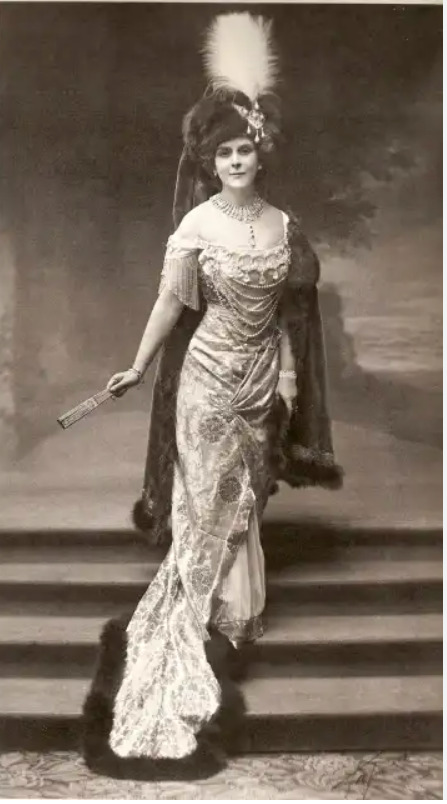




Prince Vladimir Pavlovich Paley (1897 - 1918)
Prince Vladimir Paley, son of Grand Duke Pavel Alexandrovich and Olga Valerianovna Karnovich, the daughter of a chamberlain in the Imperial Court, was born of what was considered a morganatic or unequal union. Because of this, Vladimir could not use his father’s surname of Romanov, but was later granted the title of Prince Paley by a special decree of Tsar Nicholas II.
The rules of the Imperial family prevented him from being considered a member of the dynasty; this circumstance could have saved his life. However, when he was requested by the Bolshevik regimen to deny his father, Grand Duke Pavel of Russia, he remained loyal to his honor and his affection for his father and chose captivity and death with other members of the Romanov family at Alapayevsk. On November 1, 1981, the Russian Orthodox Church Outside of Russia canonized Tsar Nicholas II and Vladimir became a martyr along the other victims of the Alapayevsk massacre.
He lived only twenty-one years, however during that brief time, he impressed those around him with his extraordinary talents. When he died, he already seemed destined to become a writer of consequence. After his premature death and because of political reasons, his poetry, passionate, fresh and sometimes tinged with mysticism, was forgotten. His only «crime» was to be related to a dynasty of which he had not even been an official member.
“Volodya was an extraordinary being, a living instrument of rare sensitiveness, which could of itself produce sounds of startling melody and purity and create a world of bright images and harmonies. In years and experience he was still a child, but his spirit had penetrated into regions reached only by a few. He had genius...”
This was the way Grand Duchess Maria Pavlovna, daughter of Grand Duke Paul of Russia and his first wife, Alexandra of Greece, spoke of her younger brother in her autobiography "Education of a Princess," and she was quite right: Prince Vladimir Pavlovich Paley was indeed an extraordinarily gifted young man and a remarkable poet.
Volodya, as he was called by his siblings, had two half siblings through his father: Grand Duke Dmitry Pavlovich and Grand Duchess Maria Pavlovna the Younger. He had three other half siblings though his mother's previous marriage. Princesses Irina Pavlovna Paley and Princess Natalia Pavlovna Paley were his full sisters.
#russian history#romanov dynasty#Grand Duke Pavel Alexandrovich#Grand Duke Dmitry Pavlovich#Grand Duchess Maria Pavlovna the Younger#Prince Vladimir Pavlovich Paley#Princess Olga Paley#Alapayevsk martyrs
12 notes
·
View notes
Text
“Alapaevsk Martyrs” 18 July 1918
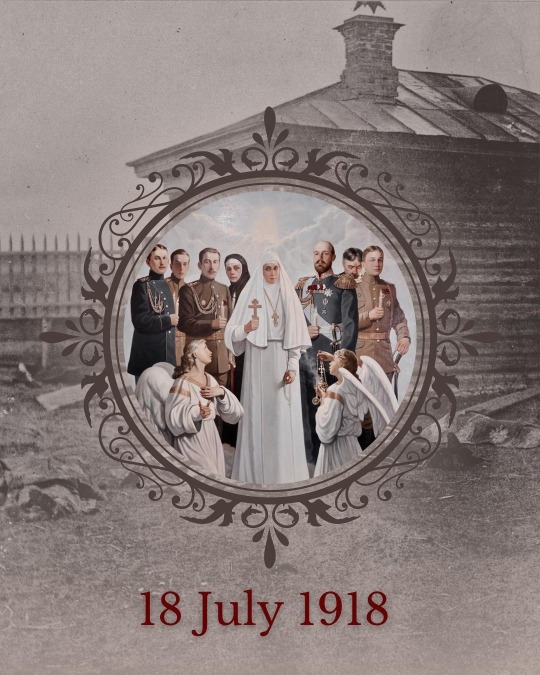
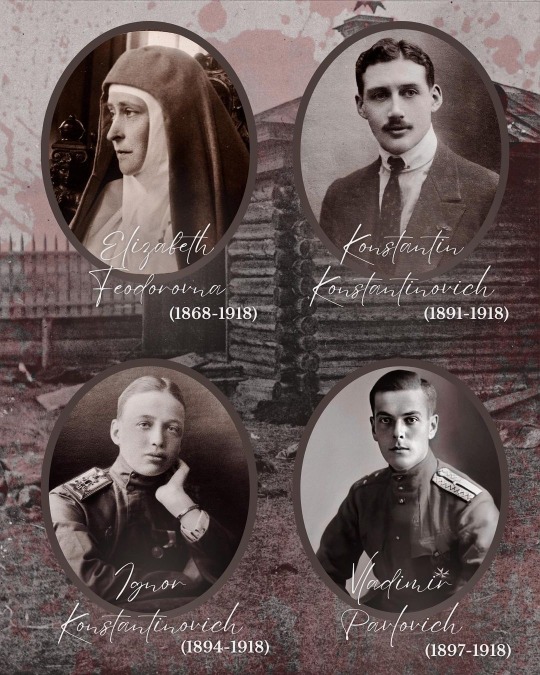


105 years ago, only one day after the brutal execution of the last Tsar and his family in Yekaterinburg, six more members of the extended Romanov family and two of their confidants met their tragic end in Alapayevsk.
In 1918, Lenin ordered the Cheka to arrest Elizabeth Feodorovna, the Empress’ sister. She was then exiled to different cities across Siberia, including Perm and Yekaterinburg, where she was joined by seven other people. On 20 May 1918, they were all transported to Alapayevsk, where they were imprisoned inside of a school.
In the early hours of 18 July, the prisoners were awakened and driven in carts on a road leading to a close by village where there was an abandoned iron mine with a pit 20 metres deep. Here they halted. The prisoners were aggressively beaten up by the Cheka before being thrown into this pit. Hand grenades were then hurled down the shaft.
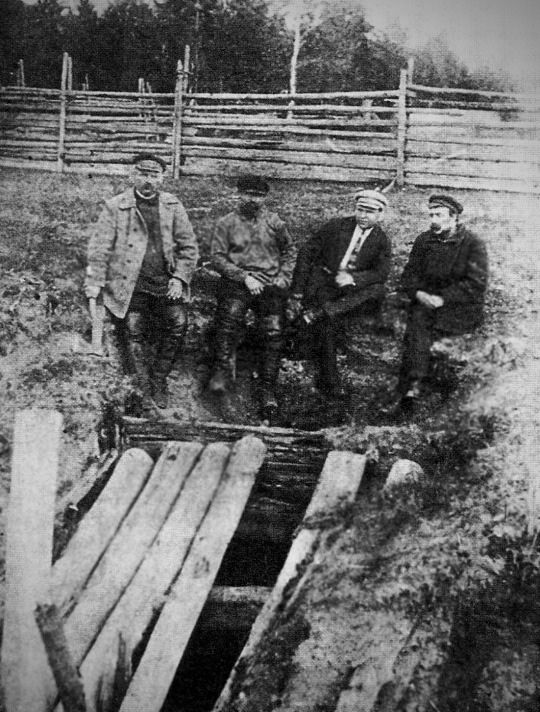
According to the personal account of one of the executioners, Elizabeth and the others survived the initial fall into the mine, prompting one of the executioners to toss in a grenade after them. Following the explosion, he claimed to have heard Elizabeth and the others singing an orthodox hymn from the bottom of the shaft. Unnerved, he threw down a second grenade, but the singing continued. Finally a large quantity of brushwood was shoved into the opening and set alight, upon which he posted a guard over the site and departed. The Bolsheviks tried to hide their tracks and blamed the crimes on an “unidentified gang”.

Cataverna (morgue) in St. Catherine's Church. Alapaevsk. 1918 ( The bodies of the Alapaevsk martyrs)
On 8 October 1918, White Army soldiers discovered the remains of Elisabeth and her companions, still within the shaft where they had been murdered. Despite having lain there for almost three months, the bodies were in relatively good condition. Most were thought to have died slowly from injuries or starvation, rather than the subsequent fire. Elisabeth had died of wounds sustained in her fall into the mine, but before her death had still found strength to bandage the head of the dying Prince John with her wimple.
The victims were first buried in the cemetery of the Russian Orthodox Mission in Beijing. In 1921, the bodies of Elizabeth and Varvara were moved to Jerusalem.
Source: marianikolaevnas
#elizabeth feodorovna#sergei mikhailovich#John Konstantinovich#Konstantin Konstantinovich#Igor konstantinovich#Vladimir Paley#Barbara yakovleva#Fyodor Remez#18 July 1918#1918#romanovs#Alapaevsk martyrs
54 notes
·
View notes
Photo
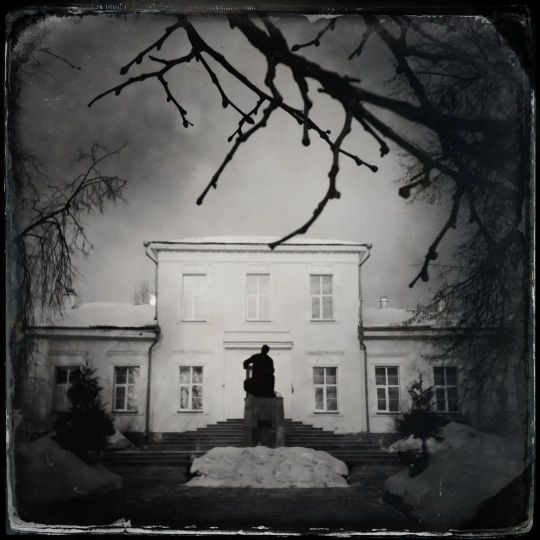
#oldiphone #iphone3gs #johns #hipstamatic #tintype #bw #чб #blackandwhitephotography #чернобелаяфотография #noir #нуар #gothictree #готичноедерево #tchaikovski #чайковский #tchaikovskishouse #домчайковского #gothictchaikovski #готичныйчайковский #statueoftchaikovski #статуячайковского #fineartphotography #фотографиякакискусство #streetporn #уличнаяфотография #lensculture #phornography #streetphotography #alexeyfrolov #алексейфролов (at Alapayevsk) https://www.instagram.com/p/CpSknzyIgqp/?igshid=NGJjMDIxMWI=
#oldiphone#iphone3gs#johns#hipstamatic#tintype#bw#чб#blackandwhitephotography#чернобелаяфотография#noir#нуар#gothictree#готичноедерево#tchaikovski#чайковский#tchaikovskishouse#домчайковского#gothictchaikovski#готичныйчайковский#statueoftchaikovski#статуячайковского#fineartphotography#фотографиякакискусство#streetporn#уличнаяфотография#lensculture#phornography#streetphotography#alexeyfrolov#алексейфролов
0 notes
Photo

Russia. Alapayevsk
Россия.Алапаевск
14 notes
·
View notes
Text

The Martyrs of Alapayevsk.
#martyrs of alapayevsk#religious ikon#grand duchess elizaveta feodorovna#grand duke sergei mikhailovich#prince ioann konstantinovich#prince konstantin konstantinovich#prince igor konstantinovich#prince vladimir pavlovich paley#varvara yakovleva#feodor remez
75 notes
·
View notes
Video
youtube
Blast furnace at the Alapayevsk Metallurgical Plant, Sverdlovsk Oblast, Russia.
The furnace was built in 1946 and has been abandoned for some years. This video shows the beginning of the dismantling of the furnace for scrap.
#Alapayevsk Metallurgical Plant#Алапа́евск#Alapayevsk#Sverdlovsk#Russia#Soviet Union#metallurgical plant#blast furnace#infrastructure
4 notes
·
View notes
Photo
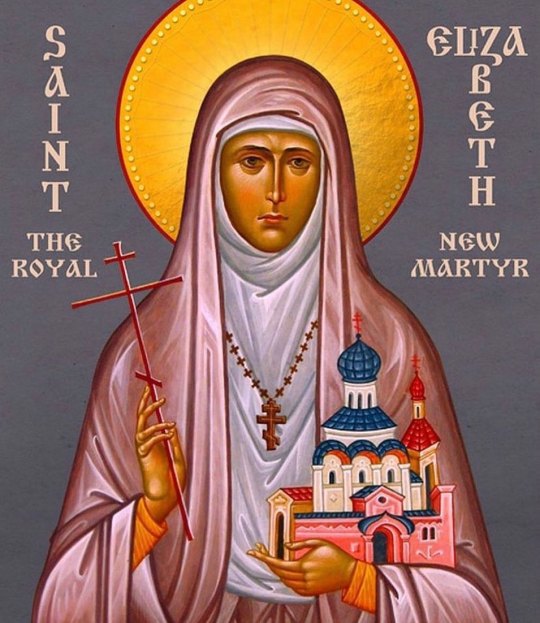
Today we celebrate the memory of the Holy Royal New Martyr, Elizabeth the Grand Duchess of Russia, the Nun Barbara and those with them. Saint Elizabeth was the grand daughter of Queen Victoria. She was also the older sister of Tsarina Alexandra (Alice) of Russia. Marrying the Grand Duke Sergius of Russia, the then Elizabeth converted to Orthodoxy, not because of her marriage, but rather of her profound interest in the faith. When her husband was assassinated in 1905, Saint Elizabeth went to the prison of her husband's murderer and preached repentance to him. Such was the gentleness and humility of her soul. She sold her mansion and bought a small property to live in. Here the Saint looked after the poor and infirm with all her heart. She then founded the Martha and Mary convent where many nuns came to live with her. The Communist rule forced Saint Elizabeth to leave her monastery with one of her her nuns, Barbara, with whom she went to Ekaterinburg. At the end of May 1918, Saint Elizabeth was taken house arrest and moved to nearby Alopaevsk with the Grand Dukes Sergius, John, and Constantine, and the young Count Vladimir Paley. They were all housed in a schoolhouse on the edge of town. St Elizabeth was under guard, but was permitted to go to church and work in the garden. On the night of July 5 1918, they were all taken to a place twelve miles from Alopaevsk, and executed. The Grand Duke Sergius was shot, but the others were thrown down a mineshaft, then grenades were tossed after them. St Elizabeth lived for several hours, and could be heard singing hymns. It is said that the last act of Elizabeth while alive in the mineshaft was tearing part of her nun's habit and wrapping her fellow martyr's wounds with the material. The bodies of Saints Elizabeth and Barbara (which were found incorrupt) were taken to Jerusalem in 1920, and buried in the church of St Mary Magdalene which the Grand Duchess herself revered greatly. May the new martyrs intercede for us always + #saint #saints #martyr #martyrs #newmartyr #newmartyrs #elizabeth #barbara #grandduchess #grandduchesselizabethfeodorovna #communist #grandduke #russia #moscow #nun #love #orthodox #saintoftheday (at Alapayevsk) https://www.instagram.com/p/CgIMP0svVgZ/?igshid=NGJjMDIxMWI=
#saint#saints#martyr#martyrs#newmartyr#newmartyrs#elizabeth#barbara#grandduchess#grandduchesselizabethfeodorovna#communist#grandduke#russia#moscow#nun#love#orthodox#saintoftheday
25 notes
·
View notes
Text
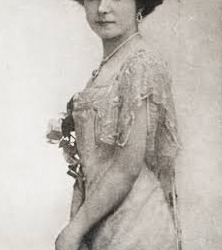
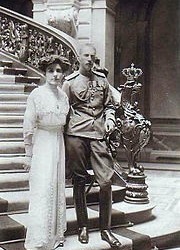


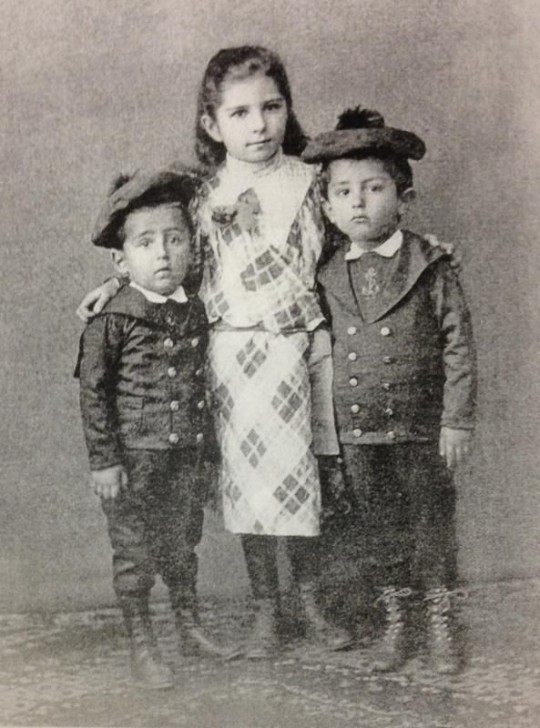
One of my favourite lesser known of the Romanovs was Princess Elena Petrovna Romanova of Russia.Born a Princess of Serbia,she married Prince Ioann Konstantinovich Romanov of Russia.
During the downfall of the Romanov Dynasty,Elena accompanied her husband voluntarily to his exile in Alapayevsk,but Ioann persuaded her to leave Alapaevsk and go back to their two young children, whom she had left with Ioann's mother, Grand Duchess Elizaveta Mavrikievna Romanova of Russia.
She had a "safe conduct" pass signed by Trotsky it was decided that she should go find the children and return as a family; despite the pass the local Commissar only allowed her to go to Yekaterinburg to appeal to the head of the Soviet there.She was reluctant still to leave her husband and when she went to leave she was so upset the guards allowed the prisoners to come out to wave goodbye; the sight of all of them lined up struck her with an overwhelming fear and shouted for the driver to stop but the family turned and went in after giving her encouraging signals;Elena thus went on
She was then on her own to travel and faced several dangers and intimidating situations.
In June 1918, Elena visited the Ipatiev House and demanded to see the Tsar, secretly hoping to pass on letters to the Imperial family from their relatives.
Elena identified herself as the wife of an interned Romanov but also as the daughter of the King of Serbia; the commander was taken aback but refused entry but agreed to pass a message to the Tsar.
After being refused entry, she went to the Amerikanskaya Hotel, making repeated enquiries to the Cheka. She was however arrested by the secret police and she was imprisoned in Perm.
Probably because by now her situation was known and the Serbs were making noises Elena was given her pass to Petrograd; the head of the Serb mission was at her hotel to greet her and gather the children and Elena and take them to Murmansk but Elena was determined to return to Alapayevsk and Ioann; she would accept his help as far as Petrograd but announced she would not leave Russia without Ioann
The group boarded a train but the Bolsheviks uncoupled their carriage and surrounded it and they were taken prisoner on Alexander Georgiyevich
Beloborodov's orders; she was separated from the Serb diplomat and taken to Yakov Mikhailovich Yurovsky where she was strip-searched and locked in a room.
After 2 weeks Elena was told the Alapayevsk prisoners had been set free and the White Army was approaching; little did Elena know her husband and relatives had been murdered
Yakov Yurovsky then ordered Elena to dress to go 'to Moscow' but they drove out to a forest where Elena was sure she'd be shot in reprisal for the prisoners' 'escape' but they entered a clearing where a train waited; the Bolsheviks were taking hostages to protect them from the Whites; the party of a few dozen included Mr Atamamnoff and the Serb diplomat; Helen was stunned to see that the only women in the group were Countess Anastasia Vasilievna Hendrikova and Catherine Alphonovna Schneider who had accompanied the Imperial Family and who had been imprisoned since their arrival; the hostages were herded onto the train which headed to Perm where they walked to the prison and the 3 were placed in one cell
They soon heard of the Imperial Family's fate and after a few weeks the guards came for Hendrikova and Schneider who were then shot; Elena was now alone and she was soon moved to a cell with 12 female criminals who were mostly prostitutes who'd killed lovers, husbands or for money; things started off badly but Helen eventually made friends with some and promised to help them rebuild their lives if they survived; Elena spent 5 months in total in the cell; because no one knew precisely were she was she was believed dead and her father began mourning
In December the Norwegian ambassador (who helped as representative of a neutral country) found her ; the guards came for Elena who was sure this was the end but they informed her she would be given a diplomatic passport to leave Russia.
When she reached Moscow though she wasn't taken to the Norwegian consulate but rather to Lubianka prison; the man in charge was known for his cruelty but he actually treated Elena fairly well; he didn't confirm the Alapayevsk deaths but did those of the Imperial Family, he promised to find out about her children and did--reporting they were in Sweden; Elena was supposed to be kept under guard in the prison but Peters obtained rooms for her in the Kremlin; she was given a good meal but her system was so abused that she couldn't eat it and instead gave it to a guard who'd served with her father-in-law.
Soon Peters gave her the news that she could leave the next evening but had to be off Russian soil within 48 hours; the Norwegian ambassador told her to go to the Consulate and gave her papers to leave; the ambassador and his wife were leaving as well and accompanied Elena to Finland; as she was leaving she got a huge shock when Peters' assistant arrived with a huge bouquet of flowers and a note of apology for his not being able to see
As they reached the Finnish border they had to get out and walk as the bridge was destroyed; just short of the border Elena was stopped and said she couldn't leave; Elena began to panic but Mr Kristianson (the ambassador) gave the guard a hefty bribe and, with one last glimpse back at her adopted homeland,Elena left Russia forever; by the next day she was in Stockholm where Prince Schakovskoi (her brothers-in-law former ADC) was waiting to take her to her children; on the way he suddenly blurted out that her husband had been killed with the others which was the first Elena had heard this; her reunion with her children was strained as they barely recognized her but she saw in them her husband and their legacy
She went to Paris with the children where her brother Alexander was waiting to take her to Belgrade where she was reunited with her much-relieved father but settling permanently in Serbia was too painful of her as it reminded her of happier times so Alexander bought her a villa in the south of France where she recuperated before moving to England with her children who were educated there; she later returned to France where she died in Nice in 1962.
41 notes
·
View notes
Text



In the early hours of 18th July 1918, a full day after the execution of the Imperial Family, members of the extended Romanov family; Grand Duchess Elizabeth Feodorovna, Grand Duke Sergei Mikhailovich, Konstantinovichi brothers (Princes Ioann, Konstantin and Igor), and Prince Vladimir Paley met a brutal death at Alapayevsk in the Urals. They were killed alongside Varvara Yakovleva, a nun in Elizabeth‘s convent, and Sergei’s secretary Fyodor Remez.
“When we were sure the whole town was asleep, we quietly stole through the window into the school building. Nobody there noticed our presence, they were already all asleep. We entered through the unlocked door into the building where the women were sleeping, and woke them up, telling them quietly to get dressed at once, as they were to be taken to a safe place because of the possibility of an armed attack. They obeyed without a murmur. We tied their hands behind their backs there and then, blindfolded them, and led them out to the cart, which was already waiting by the school, sat them in it and sent them off to their destination. After that, we went into the room occupied by the men. We told them the same thing, as we had to the women. The young grand dukes Konstantinovich (KR’s sons) and Prince Paley (Vladimir) also obeyed meekly.” — The rest of the account is written in the photo above.
The bodies were recovered from the mine by the White Army in October 1918, three months after their deaths.
#romanovs#history#royalty#myedits#elizabeth feodorovna#sergei mikhailovich#ioann konstantinovich#konstantin konstantinovich#igor konstantinovich#vladimir paley
276 notes
·
View notes
Text
A book-related request
Dear Ms. Laurendet:
My name is Thomas Anthony DiMaggio. I am a 63-year old retired attorney (and non-retired writer, actor and teacher) who lives in York, Pennsylvania.
I recently began work on my second novel, "The Bell of Five Hundred Years". It is an alternative history of the 20th century, in which the Russian Imperial family secures asylum in Great Britain in 1917 (George V actually grows a spine in this version). The Tsarevich grows up to lead an international White Russian movement that ultimately restores the monarchy in Russia during World War II. A great many historical facts get revised during the story: Olga becomes the Queen of Greece, Tatiana the Queen of Yugoslavia, Anastasia marries the heir to the Mellon banking fortune, and Marie becomes the mother of Queen Elizabeth II !
The Tsarevich (ultimately Tsar Alexis II) is assisted in his work by Prince Vladimir Paley, the morganatic son of Grand Duke Paul. As you doubtlessly know, in real life Paley (known as "Volodia") was murdered at Alapayevsk in the Urals in July 1918, together with the Empress' sister Mother Elizabeth and several other Romanovs. He had already distinguished himself as a poet at 21 (in my story, he develops into a world-famous literary figure who serves as the voice of the true Russia, along the lines of Pasternak's Yuri Zhivago).
There has, to my knowledge, only been one biography of Prince Paley: a 2004 paperback entitled "A Poet Among the Romanovs", by Jorge Saenz. I have beaten the bushes trying to run a copy of this book to earth, without success.
I was wondering, in light of your interest in the last years of Imperial Russia, if you either have a copy of this book, or know where I could secure one. If either you or anyone else owns one, and does not wish to either sell or lend it, I would be glad to pay for a photocopy of the entire book.
Please let me know your feelings on this matter. My contact information is:
Thomas Anthony DiMaggio
14 Jean-Lo Way
York, Pennsylvania 17406-6701
Telephone: 717.515.5726
E-mail (the best way to reach me): [email protected]
Thank you for your time and attention to the above matters.
Very truly yours,
Thomas Anthony DiMaggio
My apologies Mr DiMaggio.I am not sure when you messaged me.I normally do not go to my settings on Tumbler.I will post a page for you.A Poet Among the Romanovs: Prince Vladimir Paley 1897-1918

Prince Vladimir Paley, first cousin of the last tsar, was a poet among the Romanovs. The rules of the Imperial Family prevented him from being considered a member of the dynasty due to the unequal Prince Vladimir Paley, first cousin of the last tsar, was a poet among the Romanovs. The rules of the Imperial Family prevented him from being considered a member of the dynasty due to the unequal marriage of his parents. This circumstance could have saved his life. Instead, when he was requested by the Bolsheviks to denounce his father, Grand Duke Paul Alexandrovich of Russia, young Prince Vladimir chose love, loyalty, honor, and affection. His only crime was being related to a dynasty of which he had not even been an official member. This is the compelling story of a young man, and a talented poet, who in different circumstances would have attained great heights. Destiny, however, played a sad role in bringing a brutal and early death to a promising life ...
Jorge F. Sáenz brings to life the previously unknown figure of Prince Vladimir Paley. In doing so, Mr. Sáenz adds to a long and distinguished list of historical studies he has written over the last thirty years. His books number well over a dozen, most of them focusing on various aspects of Costa Rica’s history and unique democratic traditions, that make the country a bastion of democracy in Latin America. His study of the life of Prince Vladimir Paley was first published as a biographical essay in Eurohistory — The European Royal History Journal. The success of this essay led to the story of Vladimir Paley becoming a full-on book. Mr. Sáenz is a career diplomat for Costa Rica, as well as a distinguished law professor at the University of Costa Rica.

This unique book, also containing many samples of the young poet's work, has a 24-page photo section depicting Vladimir Paley and those closest to him. We are exceedingly happy to be able to bring this excellent historical work to you in hardbound form.
A Poet Among the Romanovs will undoubtedly enrich your Romanov Collections!
The book is printing and will be available at the end of January 2021, the first Eurohistory book of the New Year!
EUROHISTORY
6300 Kensington Avenue
East Richmond Heights, CA 94805
USA
Phone: 510.236.1730
http://www.eurohistory.com
Arturo Beéche at 2:00 PM
Share
4 notes
·
View notes
Photo






On 18 July 1918, the day after the murder of Nicholas II and his family, Grand Duchess Elisabeth Feodorovna and several members of the Imperial family were murdered in Alapayevsk. In 1918, Lenin ordered the arrest of Elisabeth Feodorovna, who was at the time a nun at the Convent of Saints Martha and Mary. She was first exiled to Perm, then to Yekaterinburg, where she was soon joined by others: Grand Duke Sergei Mikhailovich (48); Princes Ioann Konstantinovich (32), Konstantin Konstantinovich (27), Igor Konstantinovich (24) and Vladimir Pavlovich Paley (21); Grand Duke Sergei's secretary, Fyodor Remez; and Varvara Yakovleva, a sister from the Grand Duchess's convent. They were all taken to Alapayevsk on 20 May 1918.
On the night of the 17th July, the murderers entered the school building where the women were sleeping and woke them up, telling them to get dressed, as they were to be taken to a safe place because of the possibility of an armed attack. They obeyed and then had their hands tied behind their backs there and were blindfolded and put on a cart. After that, they entered the room occupied by the men. They told them the same story as the women. The young princes Konstantinovich and Prince Paley obeyed, had their hands tied, were blindfolded and put on a second cart.
The only one who opposed was Grand Duke Sergei Mikhailovich. He was physically strong and knew that they all were going to be killed. After further resistance, one of the men shot the Grand Duke in the arm, with the intention of frightening him into submission. He did not resist further. Along the way, Grand Duke Sergei again repeated that he knew they were all going to be killed. “Tell me why? He asked. “I have never been involved in politics. I loved sports, played billiards, and was interested in numismatics An eyewitness account of the murders in Alapayevsk was later related by one of the local Bolsheviks, Vasisili Ryabov: “At last we arrived at the mine. The shaft was not very deep and, as it turned out, had a ledge on one side that was not covered by water. First, we led grand duchess Elizabeth (Ella) up to the mine. After throwing her down the shaft, we heard her struggling in the water for some time. We pushed the nun lay-sister Varvara down after her. We again heard the splashing of water and then the two women’s voices. It became clear that, having dragged herself out of the water, the grand duchess had also pulled her lay-sister out. But, having no other alternative, we had to throw in all the men also. None of them, it seems, drowned, or choked in the water and after a short time we were able to hear all their voices again...” Then I threw in a grenade. It exploded and everything was quiet. But not for long. We decided to wait a little to check whether they had perished. After a short while we heard talking and a barely audible groan. I threw another grenade. And what do you think – from beneath the ground we heard singing! I was seized with horror. They were singing the prayer: ‘Lord, save your people!’ We had no more grenades, yet it was impossible to leave the deed unfinished. We decided to fill the shaft with dry brushwood and set it alight. Their hymns still rose up through the thick smoke for some time yet. When the last signs of life beneath the earth had ceased, we posted some of our people by the mine and returned to Alapaevsk by first light and immediately sounded the alarm in the cathedral bell tower. Almost the whole town came running. We told everyone that the grand dukes had been taken away by unknown persons!”
Lenin upon hearing of Elisabeth's death remarked that "virtue with the crown on it is a greater enemy to the world revolution than a hundred tyrant tsars". On 8 October 1918, White Army soldiers discovered the remains of Elisabeth and her companions. Despite being there for almost three months, they were in relatively good condition. Most were thought to have died slowly from injuries or starvation, rather than the subsequent fire. Elisabeth had died of wounds sustained in her fall into the mine. Their remains were buried in the cemetery of the Russian Orthodox Mission in Peking (now Beijing), China. Elisabeth's body was later taken to Jerusalem, where it was laid to rest in the Church of Mary Magdalene. She was canonised by the Russian Orthodox Church Abroad and by the Moscow Patriarchate.
12 notes
·
View notes
Note
Hi I love all your posts and answers and stuff! But I wanted to ask if you knew anything about Imperial Russian nobility and what surviving Russian nobility did after the Russian Revolution?
*takes out gigantic folder and slams it on the table*
I have literally been obsessed with the Romanovs my entire life probably beginning with Anastasia (1997). Their story is one that always gets me in the heart and always captures my attention. Ask me anything about them!
The Survivors of the Romanovs
Maria Fyodorovna, Mother of Nicholas II: She escaped to England thanks to her sister Queen Alexandra. After arriving, she stayed for a while before returning to Denmark, her country of birth where she died.
Grand Duchesses Xenia Alexandrovna and Olga Alexandrovna, with their husbands, sisters of the Tsar: Xenia escaped to England where she stayed while Olga went to Canada with her family.
Grand Duchess Maria Pavlovna, Aunt of the Tsar: had not wanted to leave Russia as her son had a claim. When the rebels came she fled to Constantinople, to Venice and the France where she died.
Elena Petronova: She was briefly imprisoned in Alapayevsk and Perm but escaped to Sweden and then to France
Elizaveta Mavrikievna: She escaped with her children and grandchildren. Her daughter fled to Romania and then Switzerland.
Grand Duke Nicholas Nikolaievich & Grand Duke Peter: escaped with all their children and their wives. Nicholas was declared Tsar for a brief period of time, remaining a figurehead for the monarchists until his death.
Joy: Tsarevitch Alexei's dog who was smuggled to England after being spared the execution of his master. He's buried at Windsor Castle.
Do also have a look at the Romanov jewels. Perhaps you can find some info on those @tiaramania (who is my bible for all sparkly things)
#marie romanov#anastasia romanov#tatiana romanov#olga nikolaevna#olga romanov#tsarevich alexei#tsarina#tsar#tsarina alexandra#tsar nicholas ii#joy the spaniel#writing advice writing resources#writing advice#writing references#writing reference writing resources#writing resources writing reference#writing resources#ask answered#ask me anything#asks#ask#send me asks
164 notes
·
View notes
Photo










House of Hesse & of Romanov: Princess Elisabeth “Ella” of Hesse and by Rhine aka Grand Duchess Elizabeth Feodorovna of Russia
Elisabeth was born as the second oldest child and daughter to Louis IV, The Grand Duke of Hesse and by Rhine, and his wife Princess Alice of the United Kingdom, a daughter of Queen Victoria. In German, she is also known as Elisabeth of Hessen-Darmstadt. One of her younger sisters was the last Russian Empress Alexandra Feodorovna aka Princess Alix of Hesse and by Rhine. By her family, she was nicknamed Ella.
Elisabeth grew up very modestly for her status. She had to clean her own room and her mother made the dresses for the children themselves. Elisabeth often accompanied her mother Alice to a nearby hospital during the Austro-Prussian war. Elisabeth grew up bilingual. While she spoke English with her mother, she spoke German with her father.
Ella was a highly sought after bride. The future German Emperor Wilhelm II fell in love with her when he was still a student and proposed to her but she declined. A match supported by her grandmother Queen Victoria was with Frederick II, Grand Duke of Baden. But again Ella declined and caused a major disruption in her relationship with Empress Augusta and it took some time for her to forgive the young princess for the rejection of her grandson.
The one who could finally win her heart was Grand Duke Sergei Alexandrovich of Russia. She knew him since childhood because her great-aunt Empress Maria Alexandrovna aka Princess Marie of Hesse and by Rhine often visted her old home and took her sons with her. They bonded over the mutual experience of losing their parents and later also over their similar interest in art and religion. However, he had to proposed twice before Elisabeth accepted, much to the dismay of her grandmother Queen Victoria. The couple married on June 15th, 1884, in St. Petersburg. Ella could have legally kept her Protestant faith but she chose to convert in 1891, taking the not much changed name of Elizabeth Feodorovna.
Unlike her sister Alix, Elisabeth made a good impression on the Russian people and aristocracy. However, her marriage did not turn out happy. Sergei was a jealous man although she gave him no reason for it. The couple did not have children of their own but hosted parties especially for children and eventually took in Sergei’s niece and nephew Grand Duchess Maria Pavlovna and Grand Duke Dmitri Pavlovich.
Elisabeth encouraged Nicholas II. to pursue her sister Alix against her British families wishes. She was also the one who convinced her sister to convert to Orthodoxy after her initial refusal of Nicholas’ proposal because of a matter of faith.
Elisabeth’s husband Sergei was assassinated on February 18th, 1905. It came to her as a shock but she remained incredibly calm. Her family feared a nervous breakdown but it did not happen. Instead Elisabeth forbade herself from crying during mourning. She eventually even went to visit the assassin in prison and after hearing his reason for killing her husband, begged him to swallow his pride and she would petition to save his life. He denied but she still asked her brother-in-law to forgive him his crimes.
The death of her husband was a changing point in Ella’s life. She became a vegetarian and by 1909 a nun. After selling all her jewellery, including her wedding ring, and other items of worth, she founded the Convent of Saints Martha and Mary and became its abbess. For many years, Elisabeth's institution helped the poor and the orphans in Moscow by fostering the prayer and charity of devout women.
Elisabeth met her sister Alix for the last time in 1916, expressing concern about Rasputin’s influence over her and politics. Ella might have known about the murder of Rasputin beforehand since she sent telegrams out the night of it before the news was released to the public. Furthermore, she stated that the killing of Raputin had been a patriotic act.
Even though, she was a nun, she was still regarded as a member of the Romanov family during the Russian Revolution. She was exiled and moved across the country along with other relatives in 1918. Their last stop was Alapayevsk where they arrived on Max 20th, 1918. Elisabeth and other Romanovs were killed in the night from the 17th to 18th July 1918. It was later discovered that Ella and other did not immediately die from the gunshots. Ella for example died of wounds she suffered when falling into the pit but she still nursed Prince Ioann Konstantinovich by bandaging his head. Elisabeth’s final resting place is in the Church of Mary Magdalene in Jerusalem.
// Elsie Benett as Ella in The Last Czars - Season 01
#historic women#women in history#period drama#perioddramaedit#The Last Czars#House of Romanov#elisabeth feodorovna#Elisabeth of Hesse and by Rhine#Elisabeth of Hesse-Darmstadt#1800s#1900s#19th century#20th century#House of Hesse#House of Hesse-Darmstadt#German Romanovs#Women of the House of Hesse
373 notes
·
View notes
Photo

#oldiphone #iphone3gs #johns #hipstamatic #tintype #bw #чб #blackandwhitephotography #чернобелаяфотография #noir #нуар #doubletree #двойноедерево #wintertree #зимнеедерево #gothictree #готичноедерево #treeandsnow #деревоиснег #portraitoftree #портретдерева #fineartphotography #фотографиякакискусство #streetporn #уличнаяфотография #lensculture #phornography #streetphotography #alexeyfrolov #алексейфролов (at Alapayevsk) https://www.instagram.com/p/CpSj1P7IJy_/?igshid=NGJjMDIxMWI=
#oldiphone#iphone3gs#johns#hipstamatic#tintype#bw#чб#blackandwhitephotography#чернобелаяфотография#noir#нуар#doubletree#двойноедерево#wintertree#зимнеедерево#gothictree#готичноедерево#treeandsnow#деревоиснег#portraitoftree#портретдерева#fineartphotography#фотографиякакискусство#streetporn#уличнаяфотография#lensculture#phornography#streetphotography#alexeyfrolov#алексейфролов
0 notes
